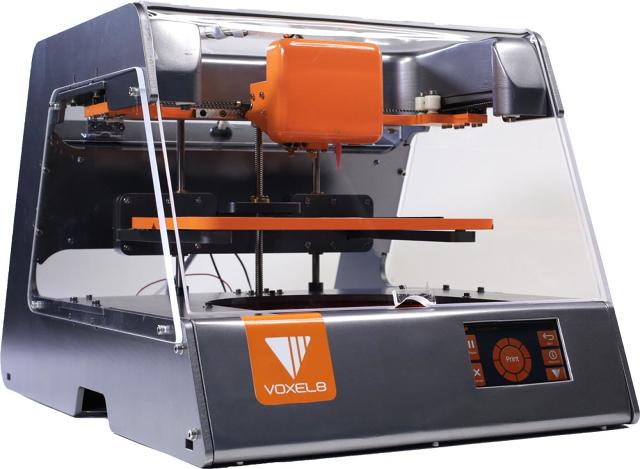The 9 Best Ideas From CES 2015
The consumer electronics show brings tens of thousands of new products to our shelves. Here are the nine you actually need to know about.
Fast Company
Mark Wilson
January 8, 2015
You won’t find a journalist alive who covers the annual Consumer Electronics Show and doesn’t find it a miserable experience. You’re basically trapped in the bowels of Las Vegas casinos, staring at 200 identical TVs and trying to distinguish the difference.
But it’s all almost worth it. Because every year, a few standout products pave the way for an entire industry of innovation. These are nine artifacts, seemingly sent back from the future to show us what’s coming next.
Makerbot’s Wood, Limestone, and Metal Printing
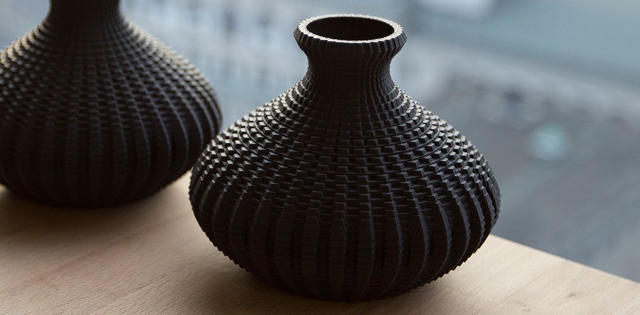
3-D printing has a lot of limitations, the worst of which may be that most home 3-D printers are printing solely in plastic. But Makerbot has introduced new filaments that, while still plastic at heart, contain tiny particles of wood, stone, or metal, resulting in products that can mimic the finish of limestone or bronze. You won’t be able to print your next set of steel cookware on a Makerbot, but for crafts and jewelry, it’s an exciting development in domestic 3-D printing. [Read more]
Takeaway: 3-D printing could have a near future beyond plastic crap.
Voxel8’S Gadget Printer
Another big limitation in 3-D printing is that, if you want to create an electronic device of any sort, you usually have to print the body in pieces, which will jigsaw together and sandwich themselves around the functional components. But at CES, a printer called Voxel8 demonstrated that it could print the plastic body and metal circuitry of a drone, all at once, with the wires actually printed inside the plastic. Voxel8 teases a near future in which they can print custom hearing aids to order. They also teamed with Autodesk to create an accessible looking modeling program called Project Wire for designers who’d like to try their own hand at printing electronics. [Read more]
Takeaway: Designing and prototyping gadgets will soon be massively accessible.
Withings Activité Pop, A Watchy Smartwatch
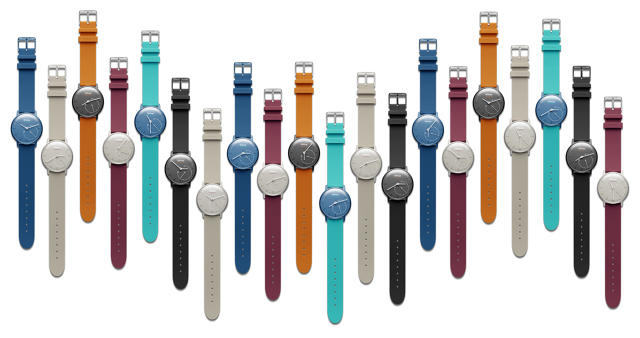
Withings introduced their analog-inspired Activité activity tracking smartwatch in 2014, but at CES, they showed off a much cheaper ($150) version. It’s not as ambitious as watches by Apple, Motorola, Samsung, or LG—there are no apps! there is no LCD screen—and instead, it features a subtle 0-100 dial that tells you when you’ve reached your activity goal. Even still, it seems like Withings may have hit a sweet spot of doing more with less, and finding a way to work in electronic sensor data to old school analog systems. [Read more]
Takeaway: Smartwatches, and smart everything, for that matter, may find more success in embracing traditional industrial design than adding another screen to our lives.
Intel’s Magic Button

How do you get the fashion industry to embrace wearable technology? Build the technology for them, and make it the size of a button. That’s Intel’s idea, anyway, with their Curie Module, a self-contained, button-sized system that contains a multitude of sensors and Bluetooth. It will be available in the second half of 2015. [Read more]
Takeaway: Intel is going to try with the fashion industry what’s already worked for them in computers and smartphones: Build the guts, let manufactures figure out the body.
Keen Home Smart Vents
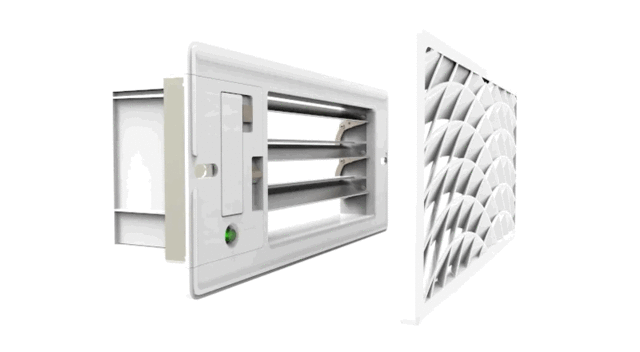
The Nest thermostat might save you money by turning off your heat when you aren’t home, but it doesn’t do anything for your drafty back bedroom. But new smart vents by Keen Home promise to open and close automatically to help compensate for rooms that get too cold or hot. It’s a great idea, but each vent will cost $85 whenever they reach the market. [Read more]
Takeaway: There are a lot of dumb devices that can be remade very usefully for the Internet of Things, but those devices will continue to come at a high pricetag. I can’t help but wonder, how many smarthome companies can sell products (even good products) with Nest’s same premium markup?
Oculus Virtual Reality Controller
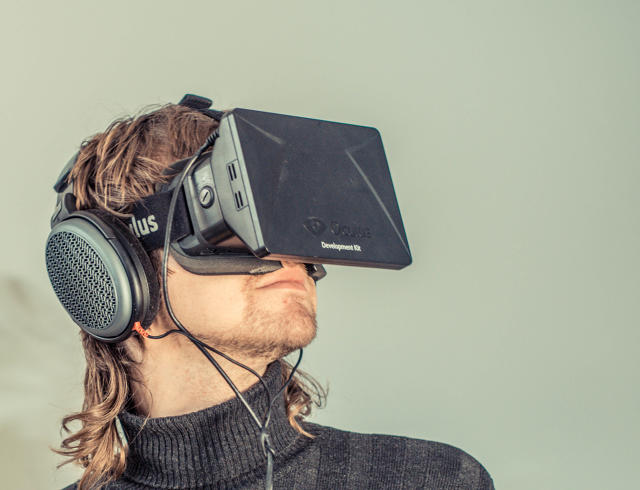
Flickr User Sergey Galyonkin
We know nothing about it, but Oculus—the same Facebook-owned company working on the Rift virtual reality headset—shared details with The Verge that they’ll be showing off a controller later this year. What will it look like? We have no idea, and that’s what’s so exciting. Oculus warned that it won’t be finished, and will be iterated publicly (much like their headset has been). But they also teased that the future of VR should feel like your whole body has been transported to another place. So expect something more ambitious than another gamepad or mouse. [Read more]
Takeaway: Who knows what virtual reality ideas will actually stick, but 2015 should be a fun, landmark year for UI.
Bang & Olufsen’s wooden touch tablet
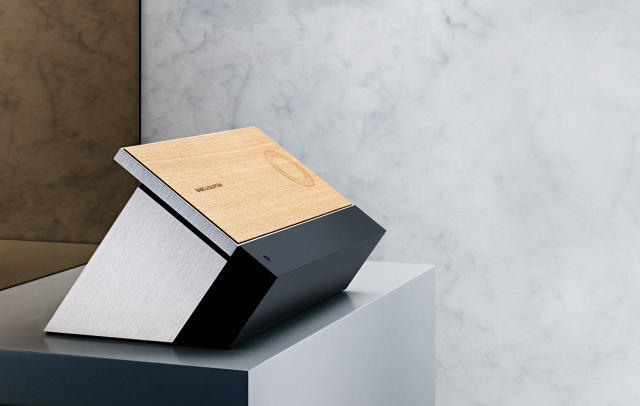
No normal human actually buys Bang & Olufsen’s avant garde electronics, but their bold designs have incredible influence. Their new BeoSound Moment is a tablet-based music system that has a wood case. Furthermore, the back of that tablet is actually touch sensitive—making it the first wooden, touch-sensitive product of note on the market. We love wood. It’s a wonderful material. And it’s exciting to see a taste-maker implementing it for a purpose beyond mere vanity. [Read more]
Takeaway: Metal, plastic, and glass aren’t the only materials that can work for electronics, even if for now, they’re the ones that sell.
Sharp's Super Thin Bezel

The new Dell XPS 13 turns from a laptop to a touchscreen tablet with a flip of the monitor. But a lot of laptops do that. What we’re smitten by is the super thin bezel—made possible by Sharp’s display technology (which seems likely to be in the next Macbook Air, too). You take one look at it, and every other laptop looks like it’s framed in one of those antique gilded frames. But there’s a tangible benefit, too: A 13-inch laptop squeezes into the traditional footprint of an 11-inch laptop. [Read more]
Takeaway: Smaller screen bezels will continue to have a strong impact on industrial design, beyond mere aesthetics.
Sling TV
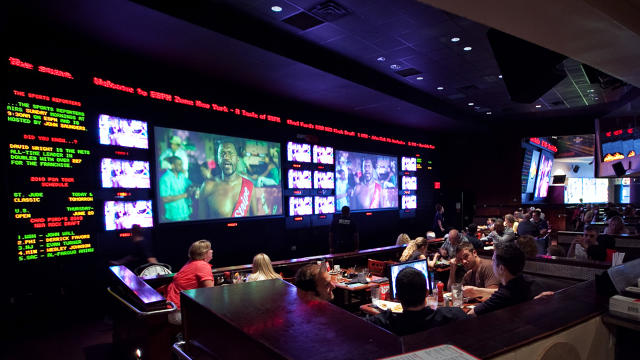
Flickr user Ed Schipul
The Dish Network is launching a new service called Sling TV. For $20 a month, it’ll stream those channels like ESPN via the internet; channels that have kept many of us tethered to traditional cable plans. So what does this have to do with design? When you unclip television from the wall, the possibilities for entertainment go truly mobile. Plus, when you make phones and tablets the de facto viewing experience, you can begin to imagine new ways of ingesting and interacting with that content. [Read more]
Takeaway: Truly seamless, omnipresent entertainment is on the way, and it has way more potential to change things than SmartTVs or new DVD technologies ever did.


